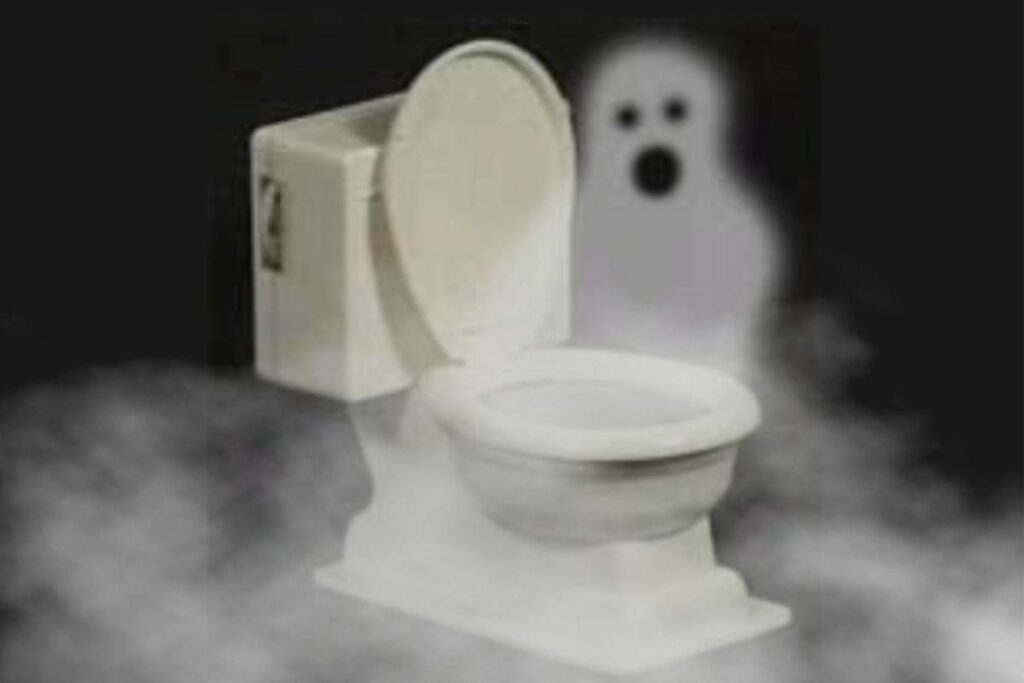Do you hear a flushing sound from your toilet, even when it hasn’t been flushed? This is called a “phantom flush,” and there are multiple things that can cause it.
Most experts state that phantom flushing is usually caused by a bad flapper or flush valve seal. However, the toilet can also make a flushing sound when not flushed, in case the refill tube is at fault, or the ball float is incorrectly positioned.
Further, in this blog post, I will discuss in detail the causes why the toilet keeps flushing on its own, and how you can get rid of this phantom flushing. However, first, we need to identify the source which is causing the toilet to flush on its own.
How to find out the source of Phantom Flushing?

Identification of the source is quite important in fixing this problem. There are a few things you can check to find out if your particular issue is being caused by a bad flapper, flush valve seal, or something else.
First, take the lid off of your toilet tank and see if the water level is rising. If it is, then you likely have a problem with your ball float.
Second, check to see if the water is draining from the bowl when the phantom flush occurs. If it is, then you likely have a bad flapper or flush valve seal. To make sure if the flapper or flush valve seal is really at fault, you can perform a color dye test. Take off the tank’s lid and add a few drops of food color into the tank. Let it stay for at least 30 minutes; don’t flush the toilet. If the flapper or seal is damaged, the color of the bowl’s water will change.
Third, there is a chance that the refill tube is damaged. For that, you need to check it for leaks. If there is a leak, it may be producing those flushing noises.
Cause #1: Toilet Flapper has turned bad

One of the most common causes of a phantom flush is a bad toilet flapper.
The flapper is the rubber seal at the bottom of the tank that controls how much water flows from the tank to the bowl. If your flapper is worn out or damaged, it might not be sealing properly, which can cause water to leak into the bowl and create a flushing sound.
Fix: Replace the flapper with a new one
To fix this, you will need to replace your toilet flapper with a new one. This is a relatively easy do-it-yourself project that you can complete in about an hour.
- Turn off the water to your toilet at the shutoff valve, which is usually located behind the toilet.
- Take off the tank’s lid and flush the toilet to empty the tank.
- Disconnect the old flapper from the overflow tube and flush the lever arm.
- Remove any debris from around the flush valve seat.
- Install the new flapper onto the overflow tube and flush the lever arm.
- Reattach the chain to the flush lever arm.
- Turn on the water to your toilet at the shutoff valve.
- Test your new flapper by flushing the toilet several times.
Cause #2: Leakage through the Flush Valve Seal

If replacing the flapper doesn’t stop the toilet from flushing on its own. Then, the next culprit is the flush valve seal. The flush valve seal is a rubber gasket that seals the gap between the flush valve and the bowl.
If this seal is damaged or worn out, it can cause water to leak into the bowl, which will create a flushing sound.
Fix: Replace the flush valve seal
Replacing the flush valve is easy and the target can be achieved if you follow the mentioned procedure.
- Turn off the water to your toilet at the shutoff valve, which is usually located behind the toilet.
- Flush the toilet to empty the tank and sponge the remaining water out.
- Take out the refill tube by removing its clips.
- Lift over the flapper.
- To remove the old flush valve seal, first, lift the tower away from the flush valve hole, then grab the sides of the rubber seal and pull it out of the groove it fits in.
- Keep the seal climbing the tower gradually until it is released.
- Insert the seal into the tower and then move it all the way back to its position.
- Insert back all the components you removed, and place back the lid.
- Turn on the water.
Cause #3: Faulty Refill Tube

The refill tube is a small plastic tube that delivers water from the fill valve to the overflow tube. If this tube is damaged or leaking, it can cause water to drip into the overflow tube and create a flushing sound.
Fix: Replace the refill tube
To fix this, you’ll need to replace the refill tube with a new refill tube. Compared to other tasks, I have mentioned it seems to be easy for you. You just need to take off the cistern’s cover; pull off the fill tube and replace it with the new one. And always, don’t forget to turn off the water supply.
Cause #4: Incorrectly Positioned Float

The float ball (or any float) is responsible for maintaining a constant water level in the tank. If the water level in the tank is too low, flushing the toilet won’t be very effective. Conversely, if the float is adjusted too high, causing the tank to hold an excessive amount of water, the toilet may periodically leak or flush itself resulting in a phantom flush.
Broken toilet floats also contribute to the problem of water overflowing from the tank. If the float ball is broken and water leaks in, the inlet’s ability to regulate water flow will be impaired, and the result might be too much water. In this instance, you may hear strange flushing from your toilet.
Fix: Adjust the position of the Float
Different toilets have different float assemblies. In case, the toilet bears a float ball assembly, you can just bend the rod upward or downward to position it. While for ones with a float cup assembly, you will see a screw mechanism. Turning it clockwise will raise the water level, and vice versa.
If you have a phantom flush, don’t panic. There are a number of easy fixes that you can do yourself. Just follow the steps outlined in this blog and you will have your toilet fixed in no time. However, if none of these fixes work and things seem to get out of your hands, you can always consult a professional plumber.

Amos Christen graduated with a bachelor’s degree in Interior Design from Drexel University — Philadelphia, PA. Since 2003, Amos has worked with top interior design professionals in this area, including architects and interior/graphic/lighting designers. As a skilled interior designer, Amos Christen is highly versed in fine arts and crafts and uses that to supplement his main area of expertise. He often publishes articles related to home décor on several websites, including Sprucetoilets.com, Sprucebathroom.com, and Mybesuitedhome.com. He also contributes to leading interior design magazines.
